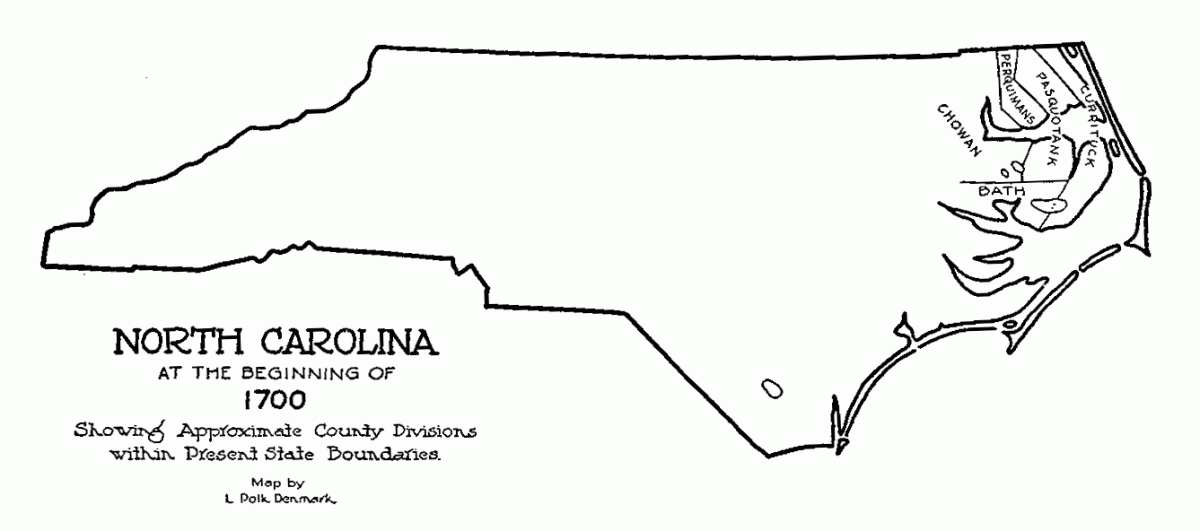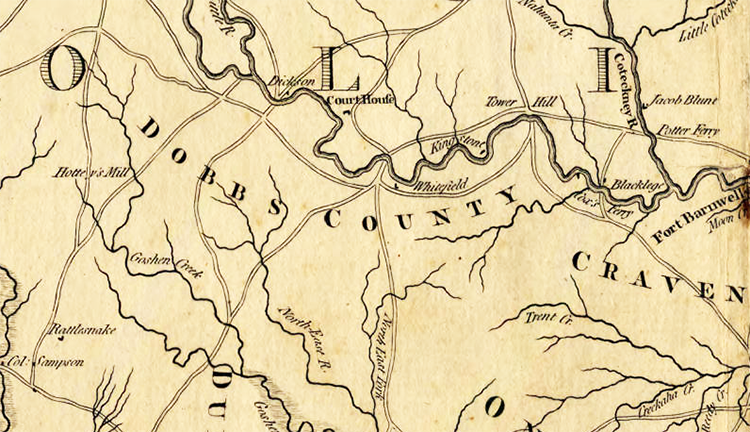Last Friday, we debuted a GIF that showed the formation of North Carolina counties. You all seemed to love it, but also gave us some great feedback about slowing the speed down and adding the ability to pause.
We’ve cut the frame speed in half to give you a better view (available below and on our website) and also posted a version of the animation on our YouTube channel to enable you to pause, if that’s something you’re interested in.

As you watch this interestomh transformation, you might notice that some of the places listed on the map at certain points now longer exist. Here’s what happened to them:
- Albemarle County was divided into Chowan, Currituck, Pasquotank and Perquimans precincts in 1668, and ceased to exist the next year when each of those precincts became its own county.
- Bath County, which was formed in 1696, suffered a similar fate in 1705, when the three precincts it was divided into became Beaufort, Craven and Hyde Counties (Beaufort County was originally called Pamtecough).
- Organized by the Lords Proprietors around the mouth of the Cape Fear River in 1664, by 1667 Clarendon County was abandoned. Since it predated 1700, this name actually doesn’t appear in the animation, but we wanted to make sure it was mentioned.

- A section of a 1775 map of North Carolina showing Dobbs County.
Image from the State Archives.
The remaining four defunct counties were all eliminated or had their names changed because the people they were named after became unpopular.
- Since former royal governor William Tryon was serving as a British officer at the time, area citizens petitioned the General Assembly to divide Tryon County into Lincoln and Rutherford Counties in 1779.
- Many North Carolinians blamed Bute County’s namesake, John Stuart, 3rd Earl of Bute, personally for the 1765 Stamp Act, so by 1779 it was divided into Franklin and Warren Counties.
- Dobbs County, named for royal governors Arthur Dobbs, was divided into Lenior and Glasgow Counties in 1791 because its name evoke memories of the old British colonial regime.
- Glasgow County, named for James Glasgow, North Carolina’s first Secretary of State, was renamed for Revolutionary War hero Nathanael Greene in 1799 after Glasgow was caught up in land fraud scandal.
Don’t forget to visit the DNCR website and NCpedia to learn more about North Carolina’s unique places.
